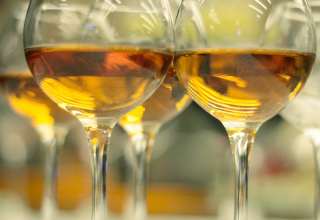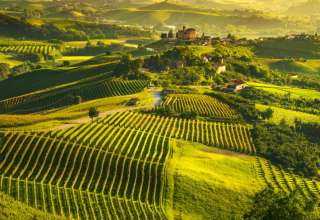Portugal has one of the largest collection of native grape varieties in the world which can make it hard to understand what it is you are buying. Here’s our guide to the biggest and most important grape varieties to know.
 The world over we see the same grape varieties popping up on wine labels. From Australia to Chile, from Argentina to New Zealand you can take your pick from Chardonnay, Pinot Grigio, Cabernet Sauvignon, Merlot and Sauvignon Blanc.
The world over we see the same grape varieties popping up on wine labels. From Australia to Chile, from Argentina to New Zealand you can take your pick from Chardonnay, Pinot Grigio, Cabernet Sauvignon, Merlot and Sauvignon Blanc.
It is like a Premier League of grape varieties have taken over the world’s wine producers leaving us with around a Top 10 to choose from. But not in Portugal. Winemaking in Portugal is so much part of the culture and fabric of the nation that it is actually hard to find any of the well known supermarket friendly grape varieties being grown or marketed at all.
Which on the one hand is good for the traditions and the heritage of the country’s winemaking credentials. But on the other hand it can be very difficult buying Portuguese wine as you rarely know what you are going to get.
Which is not surprising considering there is said to be some 250 native grape varieties, or indigenous, commonly made in Portugal that you won’t find anywhere else in the world.
So here’s our guide to the most important, and most widely grown grape varieties in Portugal. So if you have enjoyed a trip or a holiday to Portugal and loved their wine then some of these grape varieties might be a bit more familiar to you.
Our guide to Portuguese wine grapes
White wines
Alvarinho This is Portugal’s equivalent of Albariño in Spain and produces crisp, aromatic wines with notes of peach, apple and citrus fruits with a mineral character.
Arinto de Bucelas Also known as Pedernã in the region of Vinho Verde. This really packs a punch and if you like high acidity wines then make a note of this. It is the third most planted white grape in Portugal and is popular because its maintains its freshness and zing on the tongue even in hot growing climates. It also used a lot in white wine blends to give them a bit of a lift. A lemony, citrus style, but with bags of freshness and mouth feel. Ideal for sea food and sunsets.
Aristo This is a widely grown variety in northern and central Portugal producing dry, tangy wines with plenty of citrus fruit. Known as padernã in Vinho Verde.
Fernão Pires You might also see this as Maria Gomes (Bairrada) and Molinha (Setúbal). This is Portugal’s largest planted white grape variety. It is popular as it is so easy to grow and ripens easily and produces large quantities. The combination of aromatic floral aromas, particularly orange blossom and low levels of acidity makes this a very quaffable white wine.
Loureiro This is the famous grape variety made to use the fresh, zingy, almost slightly fizzy style of wines from northern Portugal known as Vinho Verde.
Síria This is also commonly seen as Roupeiro on the label, particularly in Alentejo. This comes in fifth on Portugal’s top grape varieties and the second most important white wine variety. It is popular for its aromatic qualities. It is widely planted but found good homes in the Douro valley near Porto in the north and in the Algarve in the south. You will come across this style in some of the big selling supermarket and restaurant wines due to its high production values. It produces wines with average acidity and alcohol content and is often used in blends.
Verdelho This is the same grape variety used in producing medium-sweet Madeira but it also makes soft, savoury full-flavoured dry table wines. Commonly found in Alentejo.
Red Wines
 Alicante Bouchet
This is also known just as Alicante and is mostly used in popular red wine blends. It was introduced in Portugal before the 1950s and has become particularly popular in Alentejo. This is very much a grape variety on the rise in Portugal as it offers good production levels in what are beaming hotter and drier growing conditions. Alicante Bouchet wines are soft, deeply coloured and rich in fruity. If you like your reds to be big and chunky then this is the style for you.
Alicante Bouchet
This is also known just as Alicante and is mostly used in popular red wine blends. It was introduced in Portugal before the 1950s and has become particularly popular in Alentejo. This is very much a grape variety on the rise in Portugal as it offers good production levels in what are beaming hotter and drier growing conditions. Alicante Bouchet wines are soft, deeply coloured and rich in fruity. If you like your reds to be big and chunky then this is the style for you.
Aragonês You might also see this appear on a label as Tinta Roriz (particularly in the Douro Valley). Aragonês is the most planted grape variety in Portugal. It was initially associated with the Alentejo region of Portugal, but is also now grown in other key areas such as around Lisbon, Dão and particularly, Tejo. It can produce wines of all quality levels. Aragonês is a full bodied wine with higher levels of alcohol than other grape varieties. It is said to have the same genetic characteristics to Tempranillo from Spain.
Caladoc (Red wine) This is also known as Kaladoc and introduced in the late 1950s as a grape variety that could resist vine disease. It has therefore become widely popular as a safe grape to grow with production levels trebling in the last six years. It is widely seen in wineries around Lisbon. Again this is a grape often seen in big production red wines not only for its large volumes but also its easy drinking, soft tannin, lighter fruit styles. If you like Grenache from France or Ganacha in Spain they you’ll like this.
Castelão Castelão is a popular variety to grow as it suits many different soil types and can be grown in most areas of the country. It is particularly popular in Setúbal, Tejo, Lisbon and Alentejo. It was up to 2010 the the most widely planted variety in Portugal before being overran by Aragonês. Style: Its versatility makes it a hard grape variety to pin down as it can taste very different depending on the soils where it has been grown. But, in general, this is an easy drinking, unchallenging grape variety style whether the wines are light, rich or full.
Touriga Nacional You find Touriga Nacional in many of the famous Port wines made in Portugal, but it also produces some of the best quality red wines in the country too. These tend to be small grapes which give a high concentration of colour, extract, sweetness, and aroma, which can make it ideal for longer term ageing.
Trincadeira This is also often seen as Crato Preto (Algarve) and Tinta Amarela on the label. This is one of the harder grape varieties to grow, but has found a home in important regions such as Dão, Tejo and Alentejo. This is more structured, challenging wine, with stronger tannins and bigger body. Good for meat dishes and steak, its dark fruits make it a wine that can be aged for a long time. It its also widely used in blends to balance and give more bite and structure to a wine. It can be quite herbaceous so if you can we recommend you try buy before you buy.







